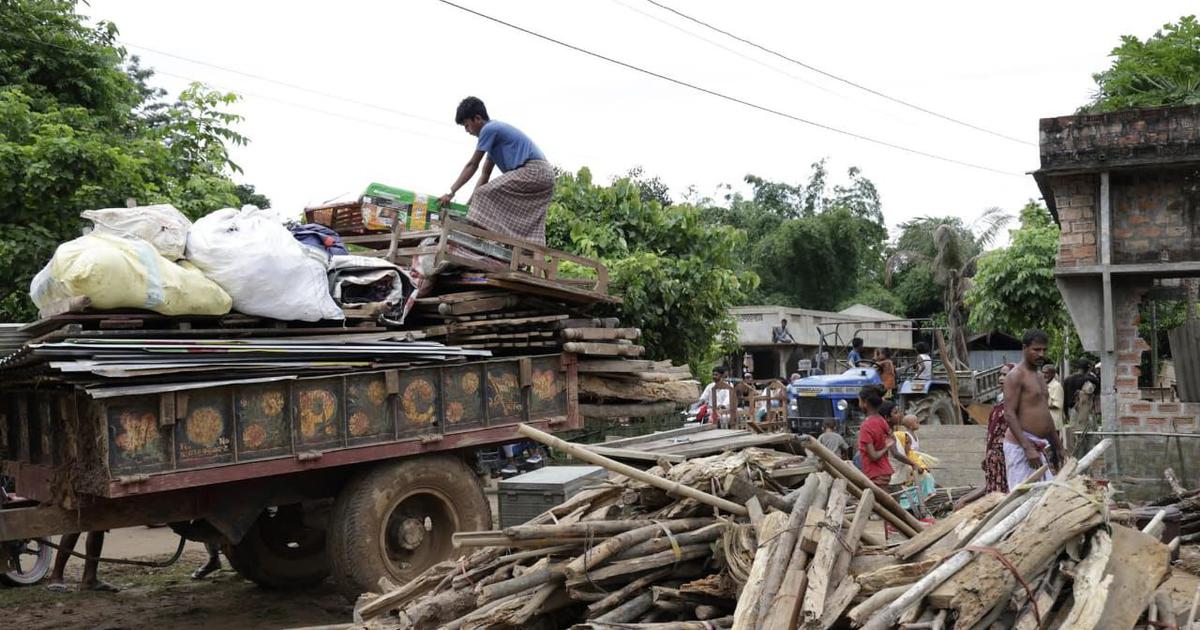
When Australian missionary Graham Staines was burnt alive on the suspicion of converting tribals in an Odisha village nearly two decades ago, he was perhaps one of the first casualties of fake news in the country.
So believes director Aneesh Daniel whose film on the missionary — The Least of These: The Graham Staines Story — releases across India on Friday.
Fast forward 20 years to 2019, the “hatred still thrives”, Daniel says.
“Nothing has changed since Graham’s murder in 1999. Hatred still thrives. Graham’s was perhaps the first case where a person was killed because some group of people thought he was into conversion. Which was not the case. That was fake news,” says the director who is on a nationwide promotional tour for his film.
Staines, who worked among leprosy patients, and his children Phillip and Timothy were burnt to death on January 23, 1999, in their jeep at Manoharpur village in Keonjhar district by Dara Singh, a known criminal linked to the Bajrang Dal.
Daniel told The Telegraph the Justice Wadhwa Commission, which probed the murders, had in its report said Staines had never asked or forced anyone to convert. “Imagine what hatred can do. Imagine what fake news can do. Today, too, people are being lynched without ascertaining the truth. We are living in a world where we don’t talk about development but things about what we eat.”
The film had released to an overwhelming response in the US on February 1. But Daniel thinks it would open to a wider audience in India because of its contemporary relevance in the backdrop of dozens of cases of mob attacks on minorities.
Staines had landed in Odisha (then Orissa) in 1965 to help leprosy patients but was “suspected” of converting tribal people, mostly those he helped, to Christianity under the guise of treating them.
In its June 1999 report, the Wadhwa Commission said Staines had been murdered for conducting “jungle camps” and preaching Christianity to converted tribals.
The report had defined jungle camps as “a congregation of Christians of a locality and some invitees. The purpose of the camp is said to be interaction among Christians and spiritual renewal. A jungle camp means four days of Bible teaching, prayer and fellowship”.
Although some tribals had been baptised at the camps, the commission found no evidence of forced conversions.
Investigators found that Staines himself had not been involved in a single conversion.
The report concluded that Dara Singh was directly involved in the killings but claimed that he acted alone and fell short of blaming the Bajrang Dal.
Opposition parties had labelled the report a “whitewash” while the allies of the ruling BJP had largely welcomed the findings.
The idea of making a film had come to Daniel’s mind soon after the report was made public but there was little progress. Writer Andrew E. Matthews gave the thought a push by drafting the story and meeting Staines’s wife Gladys (a Padma Shri awardee) in Australia to get her nod for a film on her husband’s life.
“I initially thought since Gladys has forgiven the killers of Graham, who are we to make a film on it. But Gladys nodded to it and we went ahead with the project. Several people asked me not to take up the project because it was directly coming in the way of Indian politics. But my producer (Skypass Entertainment) and I stuck to it,” says Daniel, who was part of the production team for Mira Nair’s 1996 film Kama Sutra.
“Interestingly, we started shooting (The Least of These) soon after this (the BJP) government came to power (towards the end of 2014) and we ended it when we are going to the elections. We shot mostly in Hyderabad and some portions in Odisha and I must say we never faced any resistance from any government.”
Daniel dismisses criticism that the film is a church-backed propaganda. “No it isn’t,” he says. “I had complete freedom in making the film. But priests, pastors and clerics from various churches have seen the film and they were in tears.”
The film has an ensemble cast of Stephen Baldwin (as Staines), Sharman Joshi (a fictional journalist), Shari Rigby (as Gladys) and Odia actor Monoj Mishra (as Dara Singh although he has no name in the film).
Before Baldwin, Daniel says, a Hollywood actor had been shortlisted.
“But the actor thought India is unsafe and it wouldn’t be wise to shoot in India without bodyguards. Later, Stephen Baldwin contacted us and here we are. Sharman too got back within four days after reading the script. He never bargained, he just wanted to be a part of the Graham story. It his through his eyes we see the story of the missionary.”
Shari Rigby too, the director says, did an excellent job. “I still remember one day after a shot with a leprosy patient she came out weeping. I thought somebody must have said something to her and she must have got upset. But when I asked her she said ‘Life has been so kind to us in the US, but here people’s sufferings are matchless’.”
What next? “The film has changed me,” Daniel says.
“I believe we all can be a missionary in our own way. Even if you give 15 minutes of your crucial time to someone who needs you, you can be a missionary in his/her eyes.”







